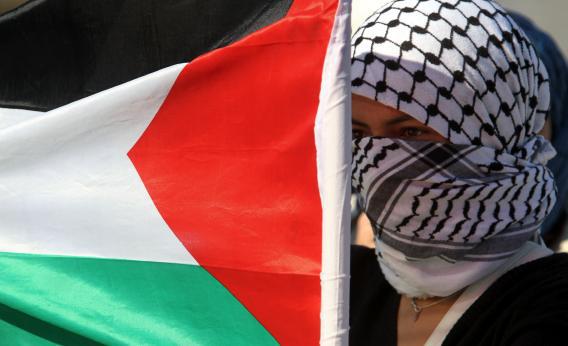On Wednesday, Israel looked like the clear winner in its social media skirmish with Hamas. But the roles have switched, and Israel is losing. It seems that building its propaganda machine according to the whims of the Western Internet culture has come back to bite the IDF. The attacks on Gaza have become a war of words, pictures, and video as much as an actual war of missiles, “martyrs,” and dead children.
Wednesday, when the IDF announced its attacks on Hamas via Twitter, social media types—like me—cooed at its innovativeness and transparency. Matthew Ingram at Gigaom even tweeted about it being a “change in military strategy.”
The good PR continued with the first video the IDF put out within hours of their first attack. The 10-second clip, now approaching 900,000 views on YouTube, highlighted the IDF’s “pinpoint accuracy.” As a Western viewer, whom I take this propaganda is for, the message of the YouTube video is clear: to portray how swift and final Ahmed Al-Jabari’s death was while showing me that Israel was trying to minimal collateral damage. (The IDF has changed its tune when it comes to YouTube.
Just two years ago, Israel chastised soldiers for videotaping synchronized dancing to Ke$ha’s “Tik Tok” during a patrol.)
But then @IDFspokesperson and @AlqassamBrigade began trading insults over Twitter, while deploying missiles at each other. The chest-thumping reminded me of the competitive e-sports. This is real life, though, with real people dying. In fact, as the BBC noted, making threats of violence is actually against Twitter’s terms of service, meaning it is within Twitter’s right to shut down both accounts if it feels so inclined.
While @IDFspokesperson’s Twitter followers may have grown exponentially, it hasn’t had the same success in hashtags. Israel’s hashtag, #Pillarofdefense, received 808 mentions by Wednesday evening, while #GazaUnderAttack—used by Hamas, Palestinian supporters, and civilians—was tweeted 120,000 times, reported the Washington Post.
One recent IDF propaganda video—allegedly showing Hamas terrorists firing rockets from Gaza—has been remixed with a musical score that could very well be out of a video game. The “Remix This Video!” option has even been enabled in the video description. No, thanks.
The video game references don’t end here. As Jon Mitchell, my colleague at ReadWrite, noted yesterday, the IDF has gamified its liveblog of the war. The IDF blog is now awarding badges for various activities, including how many times you share the blog on social media and how many times you use the search on the site.
But perhaps the worst element for Israel has been the contrast in the types of photos emerging from the two camps on Twitter. From the IDF, you have Instagrammed photos of attractive, stylish, and approachable soldiers, smartly rounded up and described as “surreal” by Buzzfeed’s Katie Notopoulos, doing what young, tech-savvy people do: smiling and having a good time, apparently.
In contrast, the photos emerging from Gaza are haunting and raw, like the now-infamous photograph of BBC Arabic journalist Omar Jihad crying into the dead body of his 11-month-old son. The Instagrammed IDF soldiers look insanely out-of-touch when compared to the realities on the ground in Gaza. One can imagine it is a matter of time before the IDF issues guidelines against posting these kinds of images. But it should be rethinking its strategy altogether.
Update, Nov. 17, 2 p.m. Eastern: Israel is now asking its citizens to not tweet or share photos of rocket attacks or the location of them, “for fear Hamas and other organizations are using social media to triangulate their rocket launches,” reports Fast Company.
